Businesses usually make the decision to recruit because they have an internal need. The main goal of the business strategy is to understand and figure out what are the existing and future needs of the organization. To be effective, the recruitment strategy must be aligned with the company’s overall goals. Creating an inefficient recruitment strategy will only turn solutions into much bigger concerns and problems, so it’s important you understand how to maximize this procedure for your team and company.

When recruiting, you should bear in mind that your strategy should provide a solution to at least one of the listed scenarios:
- Support the development and expansion of the company: Growing a team that can help to attain long-term business objectives and goals is the key element of development and expansion.
- Bringing in and acquiring new skills: In some industries, skills are becoming more important than degrees; ensure the candidates you want to interview have the right hard and soft skills you are looking for.
- Fulfilling new responsibilities: With the expansion/growth of a team and business, there can come a time when you need to hire employees with new responsibilities in order to execute the brand’s vision.
- Employee turnover: With a recruitment team that is already familiar with the job position, you can reduce the time and energy spent on identifying the right person, ensuring your team doesn’t lose momentum during times of turnover.
However, finding the dream candidate is not always as easy as it seems, and it could turn into a nightmare. Here is a list of things that can happen if you don’t put together an efficient process.

Consequences of inefficient recruitment practices:
- Loss of money: Direct costs such as the salary, the advertising, the online job board costs, and internal ATS tools. Indirect costs like the onboarding process, the material required (laptop, office, etc.), and legal fees in case there is a termination of the contract.
- Loss of time: The time spent in understanding, creating, and publishing/promoting the job postings on the different job boards. The time to filter applicants, source passive candidates, and screen, and interview to select the right candidates. Once someone is in the offer stage, even the negotiation part can take a long time, and time is money.
- Bad candidate experience and brand image: poor candidate experience during a recruitment process can seriously affect the brand image, we already touched deeper on this subject in one of our previous articles, take a look here:
- Work Environment and Morale: Frequent turnover, or having unqualified colleagues, can affect the morale, motivation, engagement, and attitude within the workplace.
Now, with that in mind, remember that where there is a will, there is a way, here are some steps to follow when recruiting a new team member:

Now that we have understood the best ways to put together a recruitment process, here are some benefits:

Benefits of a proper recruitment process
- A reduced cost per hire and time-to-hire.
- A boost in quality applicants.
- Strong employee branding.
- Chances increased of your new employee succeeding at their job.
- A long-term relationship built with the candidate that shares the same values, but remember the difference between culture add and culture fit, have a look at our previous in-depth article on this topic here so you stay ahead of the curve.
Make the most out of your recruitment processes with Babel Profiles
At Babel Profiles, one of the things that set us apart from the rest, is our flexible, transparent, committed, and human approach to recruitment. With our international talent partners, we will guide you through the process and help you find the right team that is excited and eager to join the vision of your brand to life and beyond. Want to know more? Click here and have a look at our recruitment solutions. Get in touch with us today!

Sarah AMARTI
sarah@babelprofiles.com
Get in touch with me via LinkedIn




